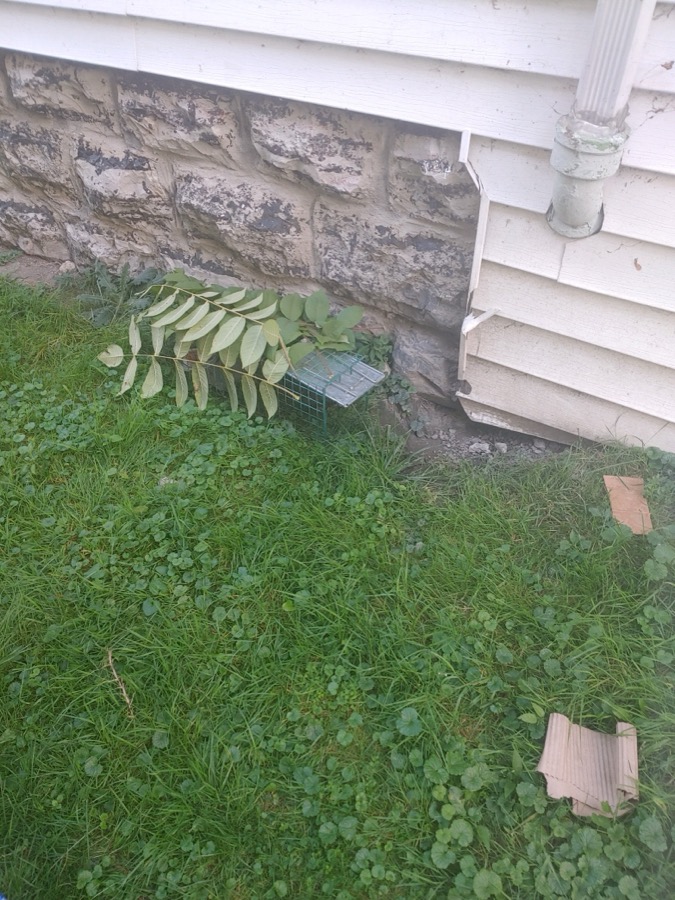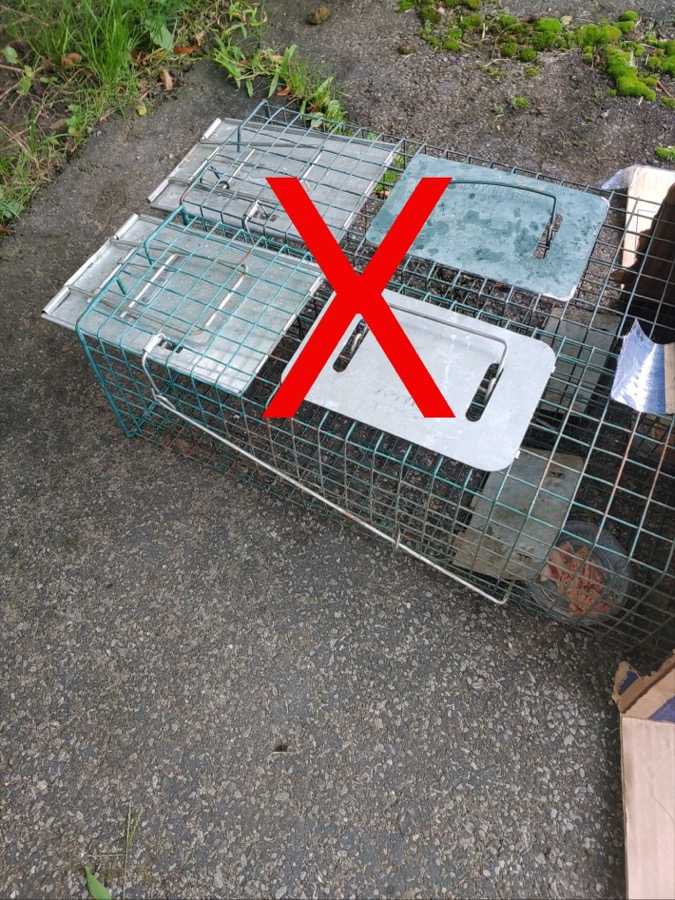Humane Trapping – Trappings Do’s and Don’ts
Remember that many tasks must be completed before trapping can start. Make sure your written plan includes every tool you need and step you must complete throughout the Trap-Neuter-Vaccinate-Return process. You must procure traps, and arrange for veterinary services, transportation, and a safe, indoor recovery space. Know the cats you plan to trap before beginning any project. Get a count of the colony members. Find out who is a nursing mom and who is about to give birth, and find out who is sick or wounded. Have a written description for each cat, and give each cat a name. Naming each cat will help you keep all the solid black cats straight and it will help you identify all the brown tabbies.
NEVER PICK UP OR HANDLE A CONSCIOUS FERAL CAT — EVEN A KITTEN
You risk injury to yourself and the cat.
DO WHAT YOU CAN TO TRAP ALL CATS AND KITTENS DURING YOUR FIRST TRAPPING SESSION

This is important because the more times cats are exposed to the trapping process, the more suspicious they become of traps.
NEVER LEAVE A TRAP UNATTENDED

Keep an eye on traps at all times for the safety of the cats and to make sure your equipment is not taken or tampered with. Unwatched traps place cats at the mercy of strangers, animals and weather. Someone who does not understand your intentions may release a trapped cat. Observe from a location far enough away that the cats will not be disturbed, but close enough so you can still see all the traps. You do not want to leave a cat in the trap for too long.
DO WITHHOLD FOOD THE DAY BEFORE YOU TRAP
You want cats to be hungry; otherwise they will have no incentive to walk into your trap!
SET TRAP ON A STABLE AND LEVEL SURFACE
Place traps on level ground—the cats will not enter an unstable or wobbly trap. Make sure they are not placed on a hill where they could tip or roll over when cats enter them. Ensure that metal traps do not sit on particularly hot or cold pavement (those temperatures could make the metal painful to the cats’ paw pads when they touch it).
SET TRAP OUT OF THE WIND, AND IF POSSIBLE LOCATE IT ALONG A FENCE, A BUILDING OR ANOTHER EXISTING STRUCTURE
You don’t want the cat to feel insecure, to see anything moving from the wind, as he walks inside this strange contraption. Additionally, setting the trap parallel to a structure will make the trap look like it is a part of the wall, the fence, the tree or whatever object you choose. When possible and practical – set up trap close to the normal feeding location.
USE A SMELLY PRODUCT FOR TRAPPING THAT WILL CARRY IN THE WIND
Canned tuna in oil, canned sardines, or mackerel all work well. The only food you should place out on a trapping day is the food you place directly inside the traps. If food is available elsewhere, cats will have no reason to walk inside the traps. Place a small portion of your bait (less than 1 teaspoon) in front of the trap opening. Drizzle some juice and scant particles of food along the length of the trip plate and place a larger portion of food at the back right corner of the trap beyond the trip plate (makes the cat reach for the food and step on trip plate).
MULTIPLE TRAPS
If you are dealing with multiple traps, you may want to move the traps a short distance from the normal feed spot. You may not want to set multiple traps next to one another. The rationale for spreading them apart is that some cats will see their mates in traps. If a trapped cat is especially fractious, the other cats will be disturbed by the activity and they may keep their distance. You don’t want to clue them in as to what is going on, but it is not always possible to hide your activity.
HAVE THE TRAP COVERS SITTING NEARBY
You want to be able to quickly fling them over a newly trapped feline. Once you have trapped a cat, immediately cover the trap with a large towel, sheet or blanket. Covering the trap can help to calm a fractious kitty; it may help him to relax.
MOVE TRAPPED CAT TO A SECURE LOCATION
- Away from the trapping activity
- Away from wind
- Out of the cold air or hot sun
- Into a quiet sheltered location- preferably inside a temperate building
ANOTHER TRAPPING STRATEGY
If you are trapping in a secure location, familiarize the cats with the traps before you are ready to start trapping. Do this several days to a week in advance of trapping, by wiring the traps to stay open, and placing their normal daily meals inside the traps. Once colony members are used to walking in and out of the traps, and once you have your trapping day planned, you can remove the wire you’re using to hold the traps open, and you can then bait the traps and set the trap mechanisms. Once you have caught your cats, follow the remaining trapping instructions and immediately drape the traps with covers and move the cats to a secure indoor location.
DO NOT OPEN THE TRAPS OR RELEASE CATS ONCE TRAPPED
Even if it appears that the cats are hurting themselves. Feral cats may thrash around after being trapped. Do not be alarmed by this—it is completely normal. Covering the trap will calm them down almost immediately. And remember; never try to touch feral cats or let them out of the trap.
PREGNANT CATS, NURSING MOTHERS AND KITTENS
Cats that are pregnant can readily be spayed. Please plan ahead. A spayed female can and will still nurse her kittens. If you suspect a female may be a nursing mother, you need to locate her litter and determine how old they are. Young kittens need to nurse frequently. Very young kittens may die without their mother’s care.
If kittens are only a few weeks old and you successfully trap the mother, please gather up the kittens to keep them with the mother. We can set nursing moms up in large traps and carefully place kittens in the trap with their mom. She can nurse them up until it is time for surgery. We can put them back with her when she is fully awake.
If her kittens are older than 3 or 4 weeks, they should still be picked up as they need the protection and warmth of an adult. They should be kept warm and fed while mom undergoes surgery. The family should be reunited after the mom wakes up from surgery.
If the kittens are 8 weeks old, healthy and weigh at least two pounds, they can also be spayed or neutered as a part of the TNVR project. Feral kittens will be vaccinated and ear tipped like the adults and be released to live with the rest of the colony. Generally speaking, friendly 8-week-old kittens may be placed into adoption programs. This needs to be arranged prior to trapping.
